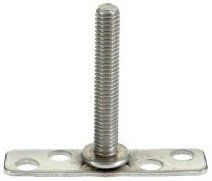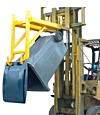
The evolution of composite materials has revolutionized design possibilities across numerous industries, offering unprecedented combinations of strength, weight reduction, and design flexibility. However, these advanced materials—including carbon fibre, fiberglass, aramid composites, and hybrid laminates—present unique joining challenges that traditional fastening methods struggle to address effectively. Composite bonding fasteners represent a specialized solution that overcomes these challenges, providing engineers and manufacturers with superior options for creating secure connections to composite structures without compromising their inherent properties. This comprehensive guide explores the applications, advantages, and implementation of bonding fasteners specifically designed for composite materials, available through trusted industrial suppliers like Hall-Fast.
The Unique Challenges of Composite Material Fastening
Composite materials present several distinctive fastening requirements that differ significantly from metals or homogeneous materials:
Structural Considerations
- Fiber Disruption: Drilling holes severs the continuous fibres that provide composite strength
- Delamination Risk: Conventional fasteners can separate composite layers when overtightened
- Anisotropic Properties: Strength varies with fibre direction, complicating load transfer
- Bearing Strength Limitations: Reduced capacity for localized compression at fastening points
- Edge Distance Sensitivity: Proximity to edges creates additional failure risks
Performance and Design Requirements
- Weight Optimization Imperatives: Traditional fasteners can negate the weight advantages of composites
- Galvanic Corrosion Concerns: Carbon fibre contact with metals creates corrosion potential
- Vibration and Fatigue Factors: Stress concentrations can initiate crack propagation
- Thermal Expansion Mismatch: Different expansion rates create stress at fastening points
- Aesthetic Considerations: Visible hardware often detracts from premium composite surfaces
Manufacturing Process Challenges
- Material Damage During Installation: Drilling errors in expensive composites cannot be easily repaired
- Dust Hazards: Composite machining creates potentially harmful particles
- Special Tooling Requirements: Proper hole creation requires specific equipment and expertise
- Quality Control Complexity: Difficult to verify proper hole preparation and fastener installation
- Post-Processing Needs: Sealed edges often required to prevent moisture ingress
These converging challenges have driven innovative manufacturers to seek fastening approaches that preserve the inherent advantages of composite materials.
Composite Bonding Fasteners: Engineered Solutions for Advanced Materials
Composite bonding fasteners represent a sophisticated joining technology specifically engineered to address the unique requirements of modern composite materials. Available from industrial suppliers like Hall-Fast, these innovative components combine structural metal fastening elements with advanced bonding systems designed for composite-specific applications.
Core Technology Principles
The fundamental concept behind composite bonding fasteners involves:
- Load Distribution Mechanics: Spreading forces across wider areas to prevent fibre damage
- Surface Bonding Technology: Creating adhesion rather than mechanical interference
- Stress Flow Management: Engineering attachment points that minimize strain concentration
- Fiber Preservation Approach: Maintaining continuous fibre structure for maximum strength
- Composite-Specific Design: Optimizing fastening systems for particular composite types
This approach delivers substantial advantages over traditional mechanical fasteners when working with sensitive composite materials.
BigHead Bonding Fasteners: Engineered for Composite Applications
For engineers and manufacturers seeking reliable fastening solutions for composite materials, BigHead Bonding Fasteners represent the gold standard in engineered joining technology. Available through Hall-Fast, these specialized components incorporate several advanced design features:
- Composite-Optimized Head Design
The distinctive "big head" design provides crucial advantages for composite applications:
- Enlarged Surface Area: Distributing loads to prevent fibre damage and delamination
- Contoured Edge Profile: Preventing stress concentration at boundaries
- Optimized Thickness-to-Diameter Ratio: Balancing strength with minimal weight addition
- Smooth Transition Geometries: Eliminating sharp angles that could initiate failure
- Material-Specific Engineering: Designed for the particular characteristics of composites
This head design ensures secure attachment without compromising the structural integrity of valuable composite components.
- Advanced Metal-to-Composite Interface
The metal fastener components incorporate specialized features for composite compatibility:
- Galvanic Isolation Options: Preventing corrosion between dissimilar materials
- Thermal Expansion Management: Accommodating differential movement through design
- Surface Preparation Optimization: Engineered for maximum adhesive bond strength
- Weight-Minimized Construction: Preserving the lightweight advantages of composites
- Vibration-Resistant Engineering: Maintaining security despite dynamic loading
These material engineering considerations ensure long-term performance in demanding applications where composites experience varied environmental and mechanical stresses.
- Installation and Manufacturing Advantages
Beyond performance benefits, composite bonding fasteners deliver significant production advantages:
- Non-Destructive Installation: Preserving the continuous fibre structure
- Elimination of Drilling Operations: Avoiding fibre damage and associated hazards
- Single-Side Access Capability: Enabling attachments in hollow or closed sections
- Reduced Process Steps: Simplifying and accelerating production sequences
- Consistent Quality Results: Providing more reliable, repeatable outcomes
These process benefits translate directly to reduced production costs and improved output quality for manufacturers working with valuable composite materials.
Industry Applications for Composite Bonding Fasteners
Composite bonding fasteners serve diverse applications across manufacturing sectors:
Aerospace and Aviation
The aerospace industry represents one of the most established applications for composite bonding fasteners:
- Interior Panel Mounting: Securing cabin components to composite structures
- Access Panel Creation: Developing serviceable openings without compromising integrity
- Equipment Installation: Mounting systems to carbon fibre airframes
- Secondary Structure Attachment: Joining non-critical components to primary structures
- Repair and Maintenance Solutions: Creating attachment points during service operations
The weight reduction, structural preservation, and certification compatibility make these fasteners particularly valuable in demanding aerospace applications.
Automotive and Transportation
Vehicle manufacturers utilize composite bonding fasteners for multiple advantages:
- Carbon Fiber Panel Attachment: Securing lightweight body components
- Interior Component Mounting: Creating clean attachments without visible hardware
- Underbody Protection Installation: Mounting aerodynamic and protective panels
- Hybrid Material Integration: Facilitating connections between composites and metals
- Motorsport Applications: Supporting high-performance racing component assembly
The weight reduction, clean aesthetics, and performance preservation make these fasteners increasingly common in transportation manufacturing.
Marine and Boatbuilding
The marine sector benefits from composite bonding fasteners in numerous applications:
- Deck Hardware Installation: Mounting fittings without penetrating fiberglass
- Interior Fixture Attachment: Securing components to composite bulkheads
- Hull Access Creation: Developing serviceable points without structural compromise
- Equipment Mounting: Securing electronics and systems to composite structures
- Structural Reinforcement: Adding load points to existing composite hulls
The combination of water resistance, structural integrity, and installation simplicity makes these fasteners particularly valuable in maritime applications.
Sports and Recreation Equipment
Performance sporting goods utilize composite bonding fasteners for critical advantages:
- Bicycle Component Attachment: Creating mounting points on carbon fibre frames
- Water Sports Equipment Assembly: Securing components on boards and watercraft
- Protective Equipment Construction: Developing attachment points in helmets and guards
- High-Performance Equipment Integration: Mounting components on tennis racquets and golf clubs
- Exercise Equipment Assembly: Securing composite elements in fitness machines
The weight preservation, clean aesthetics, and structural integrity make these fasteners popular in premium sporting applications.
Technical Performance Advantages for Composite Applications
- Structural Integrity Preservation
Composite bonding fasteners deliver significant advantages for composite protection:
- Fiber Continuity Maintenance: Preserving the uninterrupted reinforcement structure
- Elimination of Stress Concentrations: Preventing the formation of failure initiation points
- Delamination Prevention: Avoiding separation between composite layers
- Improved Fatigue Performance: Reducing cyclical stress that could lead to failure
- Enhanced Load Distribution: Spreading forces along fibre orientation for optimal strength
These structural benefits often allow for optimization of the entire composite system, not just the fastening elements.
- Performance and Efficiency Enhancement
The engineered approach behind composite bonding fasteners delivers practical advantages:
- Significant Weight Reduction: Typically 40-60% lighter than traditional fastening systems
- Improved Vibration Dampening: Absorbing movement between connected components
- Enhanced Aerodynamics: Maintaining smooth surface profiles without protrusions
- Thermal Bridging Reduction: Limiting heat transfer through connected structures
- Galvanic Corrosion Elimination: Isolating dissimilar materials from direct contact
These performance characteristics make these fasteners suitable for demanding applications where conventional fastening methods compromise composite material advantages.
- Aesthetic and Design Advantages
Composite bonding fasteners enable superior visual and design outcomes:
- Clean Surface Appearance: Eliminating visible fastener heads
- Design Freedom Enhancement: Creating attachment points on complex geometries
- Material Optimization: Enabling thinner composite sections where appropriate
- Post-Finishing Simplicity: Allowing painting or coating after installation
- Premium Product Aesthetics: Supporting high-end visual expectations
These design capabilities provide significant competitive advantages in products where appearance, weight, or material performance is critical to market success.
Implementation Guidance for Composite Applications
To maximize the benefits of composite bonding fasteners, engineers and manufacturers should consider several implementation factors:
- Design Phase Integration
Early incorporation of bonding fastener technology yields the greatest benefits:
- Load Analysis and Fastener Selection: Matching specifications to application requirements
- Composite Layup Coordination: Aligning fastener placement with fibre orientation
- Adhesive System Selection: Choosing appropriate chemistry for specific composite types
- Environmental Exposure Planning: Considering temperature, moisture, and UV factors
- Service Life Requirements: Evaluating long-term performance needs
This early planning ensures designs take full advantage of bonding fastener capabilities while addressing practical implementation requirements for composite structures.
- Surface Preparation and Installation
Proper installation processes are critical for optimal performance with composites:
- Surface Preparation Standards: Establishing appropriate cleaning and activation protocols
- Release Agent Removal: Ensuring complete elimination of mold release compounds
- Environmental Control Parameters: Managing temperature, humidity, and contamination
- Adhesive Application Methods: Developing consistent application techniques
- Curing Management: Implementing appropriate time, temperature, and pressure conditions
Following established best practices ensures reliable, consistent performance in production environments working with sophisticated composite components.
- Testing and Validation Approaches
Thorough validation ensures composite bonding fasteners meet performance requirements:
- Static Load Testing: Verifying strength under steady-state conditions
- Dynamic Load Analysis: Confirming performance under vibration and cyclic loading
- Environmental Exposure Testing: Validating long-term durability in operating conditions
- Comparative Benchmarking: Measuring performance against traditional fastening methods
- Failure Mode Analysis: Understanding system behaviour at performance limits
These validation approaches provide the data needed for confident implementation in critical composite applications.
Sourcing Quality Composite Bonding Fasteners
Hall-Fast has established itself as a premier supplier of bonding fasteners to manufacturers working with composite materials. As an industrial supplier serving customers nationwide and globally, Hall-Fast offers several distinct advantages:
- Composite Application Expertise: Providing guidance for specific fastening challenges
- Comprehensive Product Range: Offering variants optimized for different composite types
- Technical Support Capability: Assisting with fastener selection and implementation
- Quality Assurance: Supplying certified products with appropriate documentation
- Responsive Service: Supporting production schedules with reliable supply
For more information about composite bonding fasteners for your specific applications, contact Hall-Fast to discuss your requirements with their knowledgeable team. Their extensive range of high-quality fastening solutions ensures you'll find the right bonding fasteners for your composite material challenges.
Case Study: High-Performance Sports Equipment Manufacturer
A manufacturer of premium carbon fibre sporting equipment faced significant challenges with their component attachment approach:
Challenges:
- Traditional fasteners damaged expensive carbon fibre during drilling operations
- Weight addition from conventional hardware reduced performance advantages
- Visible hardware detracted from premium product aesthetics
- Assembly process created bottlenecks in production flow
- Long-term durability concerns existed with conventional fastening methods
Solution: The company implemented BigHead composite bonding fasteners from Hall-Fast, strategically positioned during the carbon fibre layup process.
Results:
- Eliminated carbon fibre damage through non-destructive attachment methods
- Reduced total fastening system weight by 58% compared to traditional hardware
- Achieved completely hardware-free appearance on visible surfaces
- Streamlined production by integrating fasteners during initial manufacturing
- Enhanced product durability through improved vibration resistance
This real-world example demonstrates the transformative potential of composite bonding fasteners in premium applications.
Emerging Trends in Composite Fastening Technology
As composite materials continue to evolve, fastening systems advance alongside them:
- Integrated Design Approaches: Building fastening points directly into composite layup schedules
- Smart Monitoring Integration: Incorporating sensors to verify connection integrity
- Automated Installation Systems: Developing precision placement during production
- Hybrid Joining Methods: Combining adhesive bonding with complementary technologies
- Sustainability Considerations: Creating systems compatible with composite recycling
Forward-thinking manufacturers who embrace these advanced joining technologies position themselves advantageously for next-generation composite applications.
Conclusion: Advancing Composite Material Utilization Through Superior Fastening Technology
For engineers and manufacturers working with advanced composite materials across diverse industries, bonding fasteners represent a critical technology that preserves the inherent advantages of these sophisticated materials. By eliminating drilling, distributing loads effectively, and creating secure attachment points without fibre damage, these innovative fasteners address the unique challenges faced when joining composite components.
BigHead composite bonding fasteners, available through Hall-Fast, offer a proven solution that delivers exceptional performance while simplifying production and extending product life. Whether for aerospace applications, automotive components, marine structures, or sporting equipment, these specialized fasteners provide advantages that conventional joining methods simply cannot match when working with sophisticated composite materials.
By implementing appropriate composite bonding fastener technology, manufacturers can achieve improved product performance, reduced weight, enhanced aesthetics, and superior structural integrity—all contributing to competitive advantage in markets increasingly utilizing advanced composite materials.
Hall-Fast - Your Trusted Supplier for Composite Bonding Fasteners












